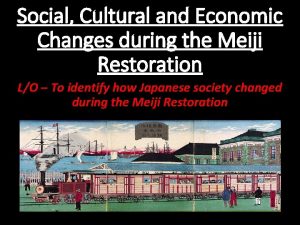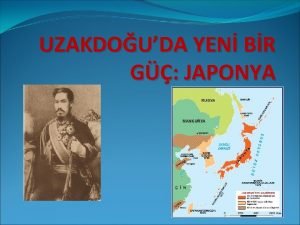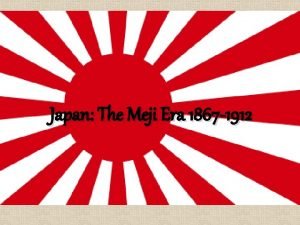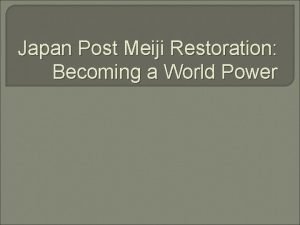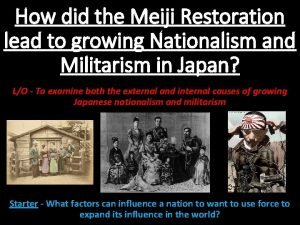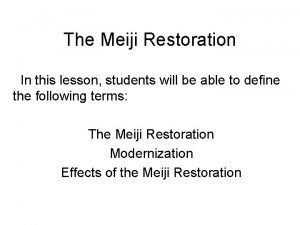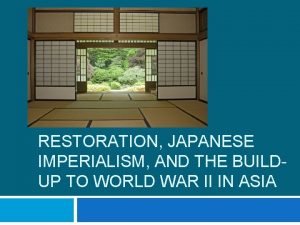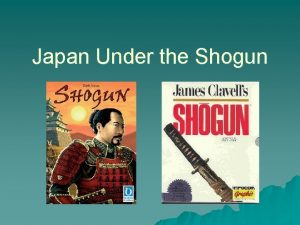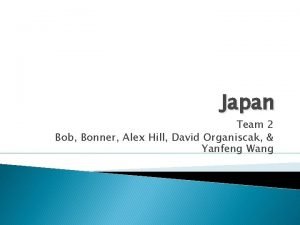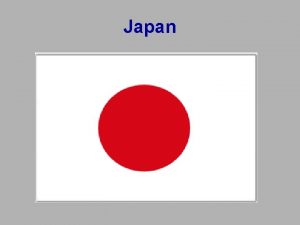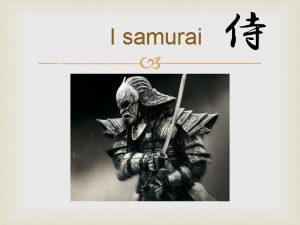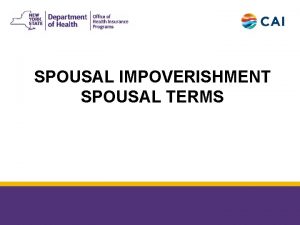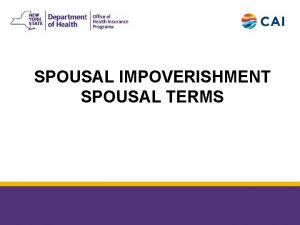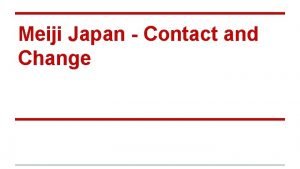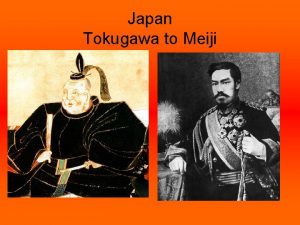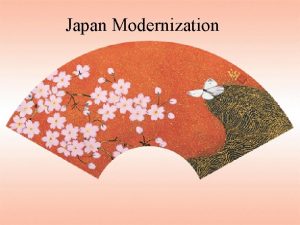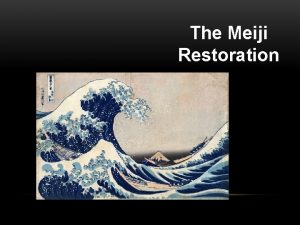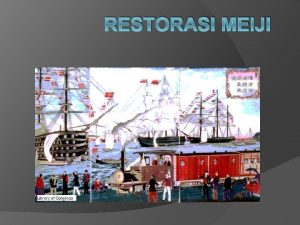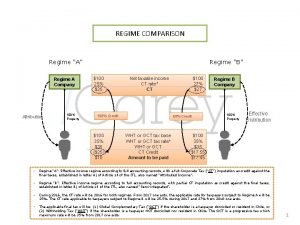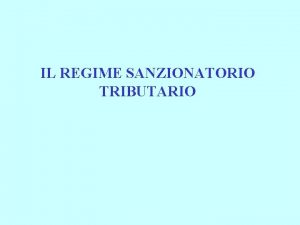Precursors to Meiji Impoverishment of regime and samurai





















- Slides: 21

Precursors to Meiji • • Impoverishment of regime (and samurai) Popular unrest Dutch studies – knowledge of west Nationalist philosophy – Imperial restoration & Shinto revival • Foreign threat – hairy barbarians Revere the Emperor 1

Black Ships • Commodore Perry – fleets in 1853 and 1854 • Forced “Treaties of Friendship and Commerce” • whaling, power politics of pacific trade Revere the Emperor 2

Treaty ports • • • Nagasaki Shimoda -- 1854 Hakodate – 1854 Kobe – 1858 Kanagawa (Yokohama) -- 1858 • Tsukiji Foreign Settlement, Tokyo from 1872 Revere the Emperor 3

Revere the Emperor 4

Treaty ports • • • Nagasaki Shimoda -- 1854 Hakodate – 1854 Kobe – 1858 Kanagawa (Yokohama) -- 1858 • Tsukiji Foreign Settlement, Tokyo from 1872 Revere the Emperor 5

From Deshima Revere the Emperor 6

To Yokohama Revere the Emperor 7

Conflict • The Richardson Incident, 1862 (Satsuma clan) • Bombardment of Kagoshima, 1863 (Satsuma) • Bombardment of Shimonoseki, 1864 (Choshu) Revere the Emperor 8

Revere the Emperor Expel the Barbarian! Sonnō Jōi! Revere the Emperor 9

Meiji Emperor Revere the Emperor 10

Meiji Restoration, 1868 Led by 4 anti-Tokugawa clans from SW Each very anti-foreign, but strengthened by foreign influences Restoration accomplished with little violence Revere the Emperor 11

From Edo to Tokyo Edo remained capital But with - - New ruling elite (SW samurai) New Imperial institutions (from 1872) Western presence Revere the Emperor 12

Meiji goals • Preserve the state • Systematic (and selective) westernization • Ideological intensification of nationalism • Standardization of national life also • Westernization as popular (non-state) trend Revere the Emperor 13

Rich Country, Strong Army Fukkoku Kyohei Revere the Emperor 14

Eastern morality, Western technology Revere the Emperor 15

Civilization and Enlightenment Bunmei Kaika Revere the Emperor 16

First rail Yokohama to Shimbashi, 1872 Revere the Emperor 17

Meiji rail Revere the Emperor 18

Tsukiji Foreign Settlement 1872 – 1899 (til end of extraterritoriality) Never very large population Yokohama remained the major center of foreign presence until well into 20 th century Revere the Emperor 19

Tsukiji foreign settlement Western influence not dependent on numbers of foreigners at Tsukiji Key institutions – hospitals, schools, universities founded in Tsukiji still remain important Popular imagination of West regardless of numbers Revere the Emperor 20

Western Japan craze Gilbert & Sullivan’s The Mikado Revere the Emperor 21
 Meiji restoration samurai
Meiji restoration samurai Synthesis of glucose from noncarbohydrate sources
Synthesis of glucose from noncarbohydrate sources Erythropoiesis
Erythropoiesis Meiji restorasyonu maddeleri
Meiji restorasyonu maddeleri Meiji restoration
Meiji restoration Meiji restoration
Meiji restoration Meiji restoration
Meiji restoration Makalah restorasi meiji
Makalah restorasi meiji Japan before meiji restoration
Japan before meiji restoration Meiji university ikuta campus
Meiji university ikuta campus Meiji restoration definition
Meiji restoration definition Define meiji restoration
Define meiji restoration Matlamat koa kunrenjo
Matlamat koa kunrenjo The samurai of japan and european knights reading answer
The samurai of japan and european knights reading answer Beggs and brill method
Beggs and brill method Twighlight samurai
Twighlight samurai Samurai athens al
Samurai athens al Social hierarchy japan
Social hierarchy japan Emperor shogun daimyo samurai peasants
Emperor shogun daimyo samurai peasants 47 ronin graves
47 ronin graves Japanese ranking system samurai
Japanese ranking system samurai Emperor shogun daimyo samurai peasants
Emperor shogun daimyo samurai peasants
